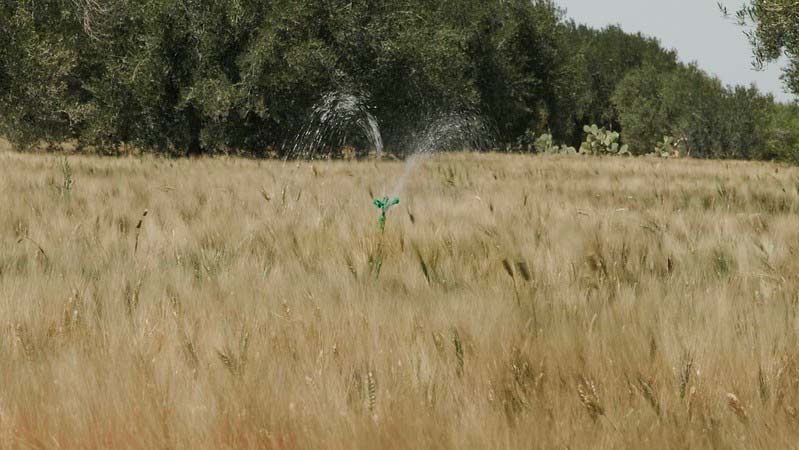Kairouan event targets productivity and credit deepening
Agri Centre Product 2025 is Tunisia’s proof point: if sector credit and GVA rise into 2026 while EMB and TAN remain constructive, food CPI volatility should compress and risk premia ease, signalling agriculture’s shift to a macro stabiliser.

Tunisia’s agriculture is entering a quantifiable capital-absorption test. The Agri Centre Product 2025 fair in Kairouan consolidates suppliers, farmers, cooperatives, and lenders to reduce information and transaction asymmetries that have kept productivity low and credit shallow. Agriculture accounted for 9.33% of GDP in 2023 and roughly 12.9% of total employment, so even modest efficiency gains transmit to national income and household welfare.
The 2025 macro backdrop is tight but stabilising: real GDP growth is projected at 2.6% for calendar 2025, headline inflation eased to 5.0% year on year in September 2025, foreign-exchange reserves were about 24.5 billion dinars—roughly 105 days of imports—in mid-October, and the central bank has held the policy rate at 7.50% since July following a March cut from 8.00%. Public debt stood near 80% of GDP at end-2024 and remains elevated in 2025, constraining fiscal space. The policy test is whether energy substitution, mechanisation, and data-rich farm management can lift yields and compress unit costs fast enough to widen bankable cash flows without reigniting inflation or crowding out private credit.
Mechanisms are specific. Solar-powered pumping and precision irrigation lower operating costs and rainfall risk in water-stressed zones; digital farm-management platforms generate auditable cash-flow histories on fragmented plots, reducing lender uncertainty and pricing risk on performance data rather than collateral scarcity. Pooled procurement and aligned input calendars compress variance in yields and farm-gate realisations. Kairouan’s reported agricultural project pipeline—approximately three-quarters of a billion dinars cited for January–September 2025—offers an empirical set to track conversion from showroom to financed asset. The farm cost curve shifts if input energy intensity declines, post-harvest losses fall via cold-chain additions, and working-capital cycles are smoothed through receivables finance and inventory-backed lending.
Macro transmission is direct and measurable. With inflation trending lower and the policy rate restrictive in real terms, reducing food-supply volatility is the highest-impact disinflation anchor available. Energy substitution curbs imported fuel exposure and limits pass-through into the food basket. Predictable farm cash flows lower non-performing-loan risk, encouraging longer-tenor lending for on-farm capital and storage. If the Kairouan hub catalyses 100–150 million dinars of incremental private financing over the next 12 months, agricultural value added could add 0.2–0.3 percentage points to 2026 GDP, while regional dispersion in food CPI narrows as logistics improve. Under that path, risk premia could edge lower at the margin through improved inflation credibility and a smaller food-import bill.
Regional comparators clarify the payoff and the risk. Morocco’s multi-year agri-tech programme demonstrates that consistent execution attracts blended finance, contract farming, and logistics upgrades; Tunisia operates with tighter ratings and liquidity, so execution risk is higher, but the economic dividend—lower supply volatility, better current-account composition, stronger policy credibility—is similar. Global context is selectively supportive: if oil prices remain contained and EM risk appetite steady, equipment pricing and funding costs improve; a renewed oil spike or risk-off turn would widen financing spreads and slow adoption. Tradeable proxies guide international positioning until investable local credit pools emerge: EM sovereign exposure via EMB, solar supply-chain dynamics via TAN, and broader EM equity risk via EEM.
Scale depends on standards and logistics. Without cold-chain capacity, grading protocols, and predictable port slots, output gains leak value through waste and price discounts. Pairing solar irrigation and mechanisation with storage and contract farming raises farm-gate realisations and normalises exporter cash cycles, which improves bank appetite for receivables and warehouse-receipt finance. The sequencing is linear and time-bound: demonstration plots and audited yield data in 2025, templated contracts and digitised records in 2026, then securitisable loan pools that lower the sector’s weighted cost of capital.
Forward verification is explicit. Execution risk is highest in year one; track quarterly agricultural gross value added, bank credit to the sector, and the standard deviation of regional food CPI. Liquidity risk intensifies if government primary deficits drive heavier domestic issuance and crowd out private credit; monitor auction calendars and term spreads. Climate risk remains structural; rainfall variance and aquifer levels will determine whether solar irrigation delivers yield resilience or merely stabilises the baseline.
A credible success scorecard by Q4-2026 is: agricultural GVA growth at least 4% year on year, sector credit up at least 10% with stable delinquencies, food CPI volatility below the 2022–2024 average, and export volumes for olives, dates, and horticulture recovering to pre-shock levels. Meeting those thresholds would validate the thesis that Tunisia can shift agriculture from subsidy-dependent to capital-absorbing, with durable macro stabilisation effects.





